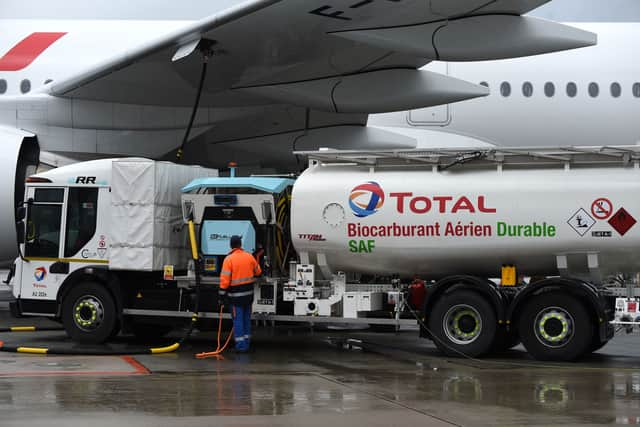Sustainable jet fuel: what is sustainable aviation fuel, is SAF safe - and how is it made?
and live on Freeview channel 276
Virgin Atlantic has received authorisation to conduct the inaugural transatlantic flight exclusively fuelled by sustainable aviation fuel (SAF).
The Civil Aviation Authority (CAA) has given a green light for the flight, scheduled to depart from London Heathrow and arrive at New York JFK on Tuesday 28 November.
Advertisement
Hide AdAdvertisement
Hide AdVirgin Atlantic chief executive Shai Weiss said: “The Civil Aviation Authority’s permit to fly Flight100 marks a key milestone and a huge achievement for all the teams working towards this historic flight.
“Getting to this point has been more than a year in the making and taken radical collaboration across our consortium partners and Government. We’re committed to using 10% SAF by 2030, but to get there we need the Government to support the creation of a UK SAF industry. We know that if we can make it, we can fly it.”
But what exactly is SAF, how is it produced, and is it safe? Here is everything you need to know about it.
What is SAF?


Sustainable Aviation Fuel (SAF), sometimes referred to as biojet fuel or alternative aviation fuel, is a type of aviation fuel designed to reduce the environmental impact of air travel. It is derived from eco-friendly sources like agricultural waste and recycled cooking oil, typically from restaurants and food processing facilities.
Advertisement
Hide AdAdvertisement
Hide AdSome SAF is produced from algae, which can be cultivated in a sustainable manner, and biomass feedstocks like wood, grasses, and other organic materials can also serve as sources for SAF production.
It reduces carbon emissions by as much as 70% when compared to conventional jet fuel, though its current production costs are several times higher and its widespread adoption faces various challenges related to production capacity and cost competitiveness.
Currently, SAF can be mixed with kerosene in jet engines to a maximum blend of 50% without requiring any modifications to the engine.
Is it safe?
SAF undergoes rigorous testing and meets the same safety standards and specifications as conventional aviation fuels to ensure that it performs reliably and safely in aircraft engines and does not compromise the safety of air travel.
Advertisement
Hide AdAdvertisement
Hide AdThe fuel's production process also involves strict quality control measures to ensure that it meets industry standards and specifications, and the safety and performance of SAF are carefully monitored throughout.
The CAA conducted a comprehensive assessment of Virgin Atlantic's proposed flight, including ground testing with an engine running on 100% SAF, before granting the operational permit.
CAA chief executive Rob Bishton said: “As the UK’s aviation regulator, it’s important that we safely enable the industry to embrace more sustainable practices and push the boundaries of what’s possible to create a greener aviation industry."
“This permit not only allows Virgin Atlantic and others to showcase their commitment to sustainability, but also serves as an example of how the industry is always exploring new technologies. Innovation and sustainability are vital areas of work, but they must go hand in hand with safety."
Comment Guidelines
National World encourages reader discussion on our stories. User feedback, insights and back-and-forth exchanges add a rich layer of context to reporting. Please review our Community Guidelines before commenting.
